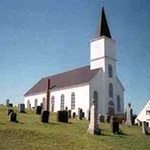Vermont Genealogy
Guide to Ancestry and Family Tree Records
The area that is now Vermont was originally claimed by a French explorer in 1609. His name was Samuel de Champlain. In 1666, the French created their first settlement, which was called Fort Ste. Anne. It wasn’t until 1724 that English settlers came to the area, building Fort Drummer, which was constructed in what is now Brattleboro, Vermont. After the French and Indian Wars, in 1763, the English got control of what is now Vermont.
Vermont is one of the smallest states in the country. While it lies fairly close to the coast, the 17th century coastal residents really didn’t travel there very much. It took until 1724 for the first permanent settlement to be established there and the population grew very slowly over the next half century or so. Vermont was the first state to join the United states after the original 13 states. It became the 14th state in the nation on March 4, 1791.
Although most of the eastern seaboard is caught up in various forms of industry, most parts of Vermont are not industrial or densely settled. Much of its economy is based on industrial activities, but it also has a lot of farmland as well. The state is also well known as a great place to vacation at almost any time of year. People who live in urban parts of Canada and the United States often travel to Vermont to get a taste of rural life.
Vermont Counties – The Vermont Republic was organized in January 1777. The State of Vermont was created as the 14th state on March 4, 1791. Vermont borders Massachusetts, New Hampshire, New York and Canada. Vermont has 14 Counties. The Vermont State Capital is in Montpelier and the state government website is www.vt.gov.
Select a Vermont county to view information & records pertaining to each County
Vermont Genealogy Record Guides
Getting Started with Vermont Genealogy and Family Trees
Useful Hints for Vermont Genealogy Research – The “Green Mountain” state is well known for its gorgeous scenery and as a popular place for skiers, autumn “leaf peepers”, and those who generally love the outdoors. It is also a tremendously historical location that has connections to Native American heritage, all of the continental American wars, and to many waves of immigration and settlement. This is why there is such a high demand for Vermont genealogy material, and this article will explain the basics of conducting some research.
As you start to search for Vermont genealogy information, you will quickly see that your resources will be found either online and offline. “Offline” simply means that there are a lot of smaller towns or local archives that have not yet put their collections into online digital archives or databases. This means that your first step in starting to search for Vermont genealogy materials is to develop a list of the different records that you will explore in the “real world”.
This must begin, however, with some background information about the basic locations for finding such genealogical materials.
Essential Tools for Vermont Genealogy Data – This article is going to provide you with information and tips about the resources for anyone doing research for Vermont genealogy. It is important to understand that this basic list is one that all researchers for Vermont genealogy will use, and it includes:
- State Records – this group will include probate information, birth certificates, cemetery information, death records, deeds, estate information, genealogical folders, land records, maps, marriage details, military or veterans information, newspapers, private manuscripts, state census information, surname lists and more. These are available as online and offline resources for Vermont genealogy.
- Local Records – traditionally, state research requires a visit to a county clerk’s office or website. From there you will often find yourself visiting and researching in small local libraries, historical societies, local genealogical societies, and school or college libraries for Vermont genealogy information. These are items that are usually offline and viewable by appointment or special arrangement.
- Vital Records – these are the birth, marriage, divorce and death records from county, state, and national archives. They include newspaper items, military records, immigration and naturalization details, cemetery or obituary information, census records, and passenger lists and records as well. These tend to be available as online or offline resources for Vermont genealogy.
The Main Resources for Vermont Genealogy – There are many reliable resources for Vermont genealogy information. The most substantial records for Vermont genealogy can be found at:
- Vermont Department of Health, Vital Records Section, P.O. Box 70, 108 Cherry Street, Burlington, VT 05402-0070; Website: http://www.cdc.gov/nchs/w2w/vermont.htm.
This is where you can order birth, death, marriage and divorce records.
Additionally, many records can be found at the following:
- Vermont State Archives, 1078 U.S. Rte. 2, Middlesex, Montpelier, Vt. , 05633-7701; Website: http://www.vermont-archives.org/…/genealogy/
There is also the information from the Genealogical Society of Vermont website: http://www.genealogyvermont.org/.
Vermont Genealogy Databases and other Helpful Links
Lastly, websites such as those listed below will provide state-specific genealogical details for those searching for Vermont genealogy details:










